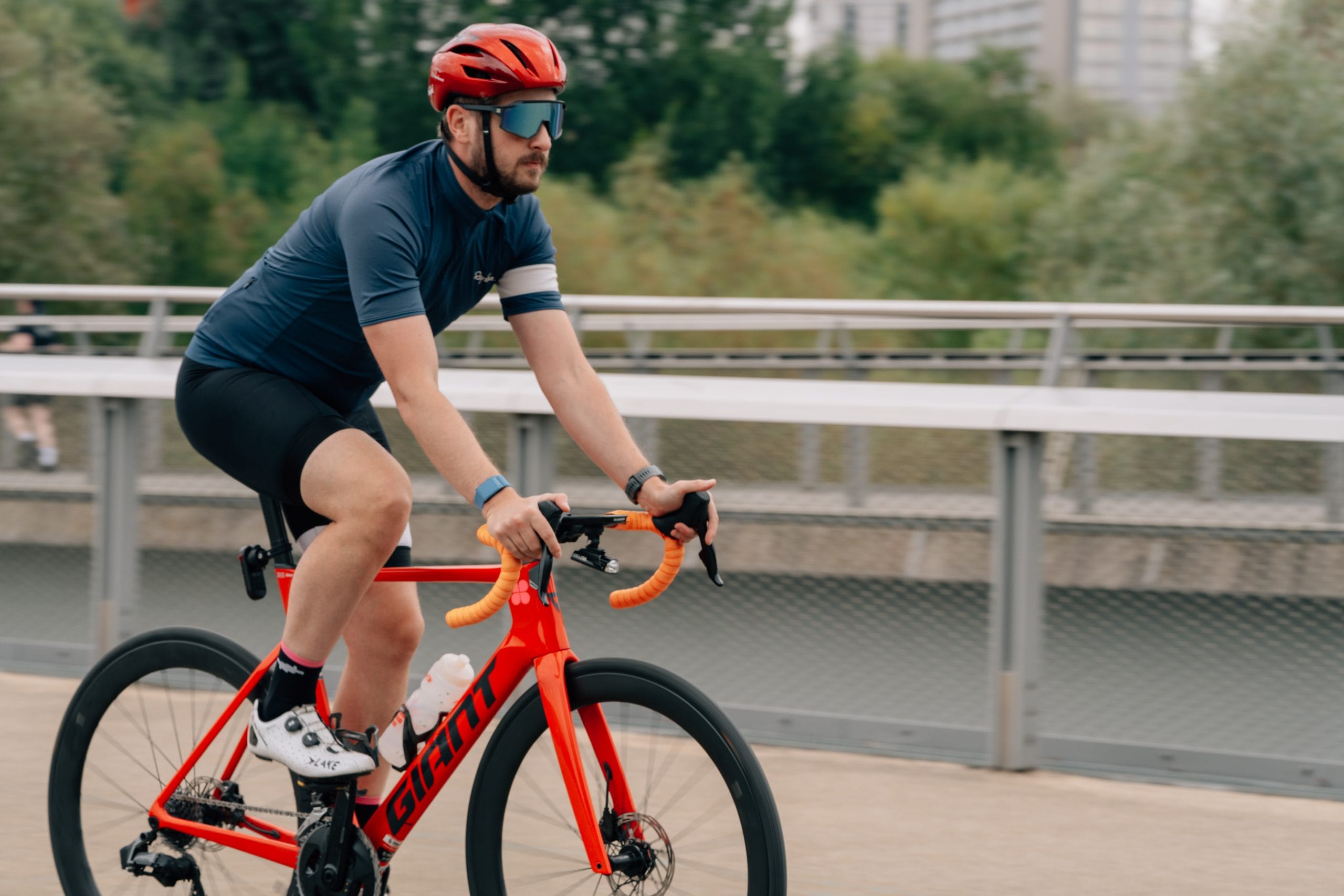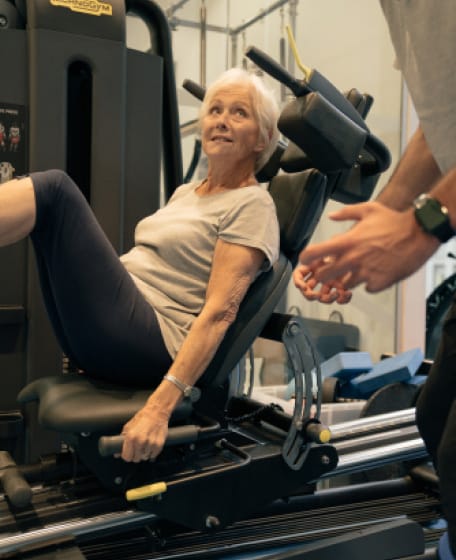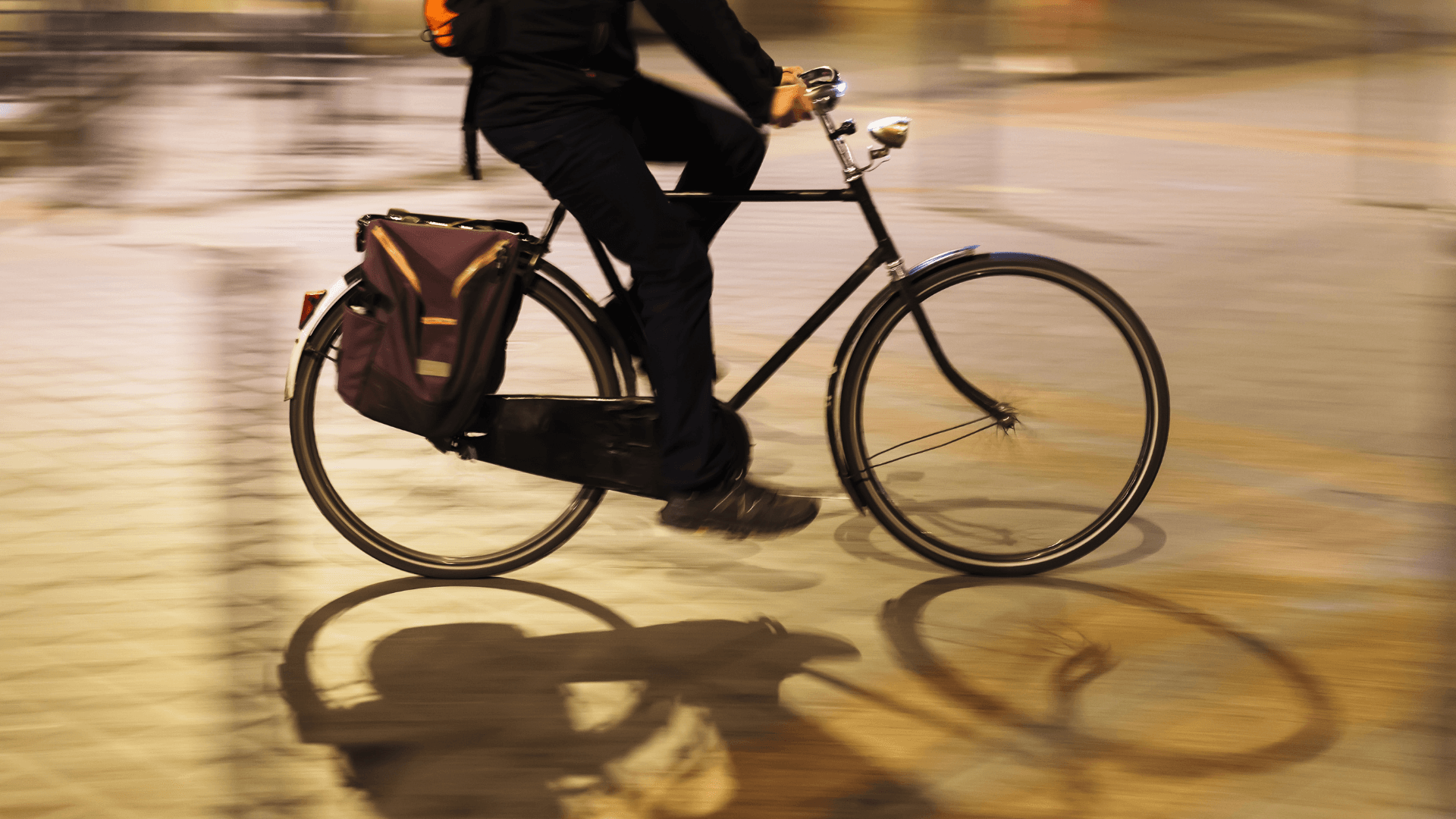Is Your Road Bike Causing Upper Limb Pain? Common Causes & Solutions

Sam Birch
Physiotherapist
- 24 September, 2020
- Cycling
- 4 min read
Is Your Road Bike Causing Upper Limb Pain? Common Causes & Solutions

If you’re experiencing upper limb and neck pain, it’s likely due to too much pressure on your hands.
When cycling on the flat at your functional threshold power or ~85% of your max heart rate, your hands should be almost weightless on the handlebars.
Functional Threshold Power is the maximum power you can put out over the course of 1 hour. This is measurable if you have a power meter on your bike, or a non-power metric is sustaining 85% of your max heart rate.
If you are feeling heavy pressure through your hands at this intensity, it’s likely there’s a problem with your current bike fit.
So how can we determine if the bike is to blame? Let’s take a look at some of the common causes.
1. Excessive Reach
Being unable to comfortably rest your hands on brake hoods, or opting for hand positions closer to the stem (where the handlebars connect onto the bike forks), are tell-tale signs a bike is too long.
Having a reach too long for your body increases the weight distribution through the hands.
By stretching forward for the bars, your centre of gravity is shifted into the front of the bike, meaning you will have to constantly brace your torso upward with locked elbows – essentially doing a plank while riding.
Excessive Reach is likely to result in elbow and shoulder injuries. To avoid these, consider the following adaptations:
- adjusting brake lever position
- swapping to a shorter stem
- handlebars with a shorter reach
- or changing to a smaller bike size
2. Slammed Stems
The stem is the component on a bicycle that connects the handlebars to the steerer tube of the bicycle fork.
Insufficient stem height is one of the two most commonly rectified issues in a bike fit.
Lowering your stem height to a more aggressive position may be more aerodynamic and might look more aesthetically pleasing but can often overexert recreational riders.
Stems lowered beyond the rider’s tolerance results in weight being thrown forward onto their hands and increasing pressure through the arms. Plus, the added demands to neck extensor muscles, to hold your head up, often results in posterior neck pain.
Insufficient Stem Height is likely to result in neck and shoulder issues. Consider lifting the handlebars if you’re experiencing discomfort or pain after long rides.
3. Excessive Handlebar Width
Most off-the-shelf road bikes have handlebars too broad for riders, especially for women.
Handlebars which are too wide can result in wrist discomfort as riders will often compensate by rolling the palms inwards to achieve a neutral shoulder position.
A ball-park measurement for your handlebar width is the same distance between either end of collar bones (acromioclavicular joints). This usually gives a neutral positioning to the wrists and shoulders.
Larger frame sizes have even wider bars attached as standard, despite taller riders often being more slender in terms of shoulder width.
Excessive Handlebar Width can result in shoulder and wrist injuries. If you’re getting shoulder or wrist pain, consider measuring your shoulder span and look for alternate handlebars.
4. Hood / Brake Lever Placement
Brake levers should have a comfortable interface with the hand.
Excessive downward or upward tilt imparts compressive forces to the wrist.
Extreme cases can result in elbow and forearm pain. A very slightly up and inward tilted position is easily achieved by moving the hoods under your bar tape or changing the handlebar rotation.
5. Excessive Saddle Tilt
Downward tilt to saddles is often incorrectly applied in a bid to relieve saddle pressure.
As well as worsening the problem on those sensitive areas, it also leads to increased bracing forces on the upper body to prevent slippage down the saddle.
Flatten your saddle and drop it ~15mm if your bum is uncomfortable – your arms will thank you for it.
6. Insufficient Saddle Layback
Saddle Fore/Aft is how far forward the saddle is. On the underside of saddles, there are rails which can be allow the seat to slide forwards (fore) and backwards (aft). Unfortunately it is often wrongly adjusted as a means of shortening reach.
With insufficient saddle layback, your centre of gravity is thrown forward into the front of the bike, which increases pressure through arms and hands.
This is common in riders who are trying to compensate for a bike that is too long for them, often resulting in elbow and hand pain.
Consider sliding back the saddle rails and changing your stem length instead.
7. Excessive Saddle Height
Lowering saddle height is the other most rectified issue in a bike fit.
Excessive saddle height results in the rider shifting their pelvis to one side as a compensation mechanism.
This increases the pressure though your hands (usually your non-dominant side) in a bid to balance the bike. Consider lowering your seat and sitting squarer on the saddle if you’re getting one-sided hand pain, tingling or numbness.
These 7 aspects of bike setup and cycling posture should be analysed if you are experiencing persistent neck, shoulder, elbow or wrist pain when on the bike.
If you are having trouble making these changes yourself, we have a bike fitting service established at a number of our clinics.
If you’re cycling regularly it’s really important that your bike is set up individually for you as this help you avoid injury or any other problems that could take you off the road.
Our bike fitting service will ensure that you’re in the best possible place every time you ride with a set-up that’s tailored to you. Find out more about the service here.
There could be other contributing factors to your pain, such as inadequate recovery and previous injuries, so if in doubt, or these changes do not help, you can speak to one of our specialists for a comprehensive assessment of your symptoms.

Advice
Over the last 20+ years our experts have helped more than 100,000 patients, but we don’t stop there. We also like to share our knowledge and insight to help people lead healthier lives, and here you will find our extensive library of advice on a variety of topics to help you do the same.
OUR ADVICE HUBS See all Advice Hubs